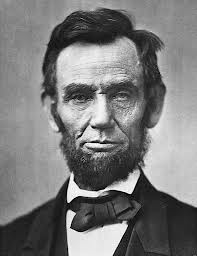Sometimes it’s necessary or desirable to refer to a source when we mention it on a site’s page. For this purpose, we have the <cite> tag. It’s handy for attribution purposes, but it also helps the search engines gain a better understanding of what your page is about.
W3C describes the <cite> tag as a means of defining the title of a work. That could be a movie, book, song, painting, sculpture, TV program or any other piece of art which is named.
For instance, take this sentence:
The first Star Wars movie, Star Wars: A New Hope, by George Lucas, had box office sales of nearly half a billion dollars in the U.S. alone.
If we decide to use <cite> tags, we would appropriately cite the name of the movie, in this fashion:
<p>The first Star Wars movie, <cite title=”Star Wars: A New Hope”> by George Lucas</cite>, had box office sales of nearly half a billion dollars in the U.S. alone.</p>
What would appear on the page would be only this:
The first Star Wars movie, by George Lucas, had box office sales of nearly half a billion dollars in the U.S. alone.
Yet when the user places the mouse over the italicized name of the author, a pop-up will show:
“Star Wars: A New Hope”
As you can see, it’s fairly straightforward. The title of the work is simply captured between the <cite> and </cite> tags, identifying the referred-to work in the sentence as a title. The artist’s name is then added, outside the quotation marks, but within the cite tags.
In another example, quoting Abraham Lincoln’s Gettysburg Address:
“Fourscore and seven years ago…” may be the most widely recognized words from a famous speech, The Gettysburg Address, by Abraham Lincoln.
Here we are quoting Lincoln, so you might think we would enclose his name in the <cite> tags. But a person is not a work. In this case, a good argument can be made, however, that the Gettysburg Address qualifies as a work. So the markup should be:
<p><q>“Fourscore and seven years ago…”</q> may be the most widely recognized words from a famous speech, <cite title=”The Gettysburg Address,>by Abraham Lincoln.</cite></p>
Here, again, the user page will display:
“Fourscore and seven years ago…” may be the most widely recognized words from a famous speech, by Abraham Lincoln.
until the user passes the mouse over Abraham Lincoln’s name, and a pop-up displays “The Gettysburg Address”.
Notice the <q> tags, calling out the quotation. They’re independent of the <cite> tags, of course, but in this case, they’re appropriate to add.
Many people think that they can use this tag to attribute credit for a quotation of an individual, such as:
<p><cite>Patrick Henry</cite> famously said, <q>”Give me liberty or give me death”</q>.</p>
However, according to W3C convention, this is incorrect. A person’s name is not a work. In this example, the only tags that should be used are the <q> tags. Don’t use the <cite> tags when quoting an individual.
Incorrect usage of tags and attributes tends to confuse the search engines about what your page is trying to say. When that happens, the algo may decide for itself, regardless of the signals you’re trying to send, resulting in less relevance. Tags such as these can render benefits, so it pays to be sure you’re using them correctly. You can see more about <cite> tags on the W3C website.

